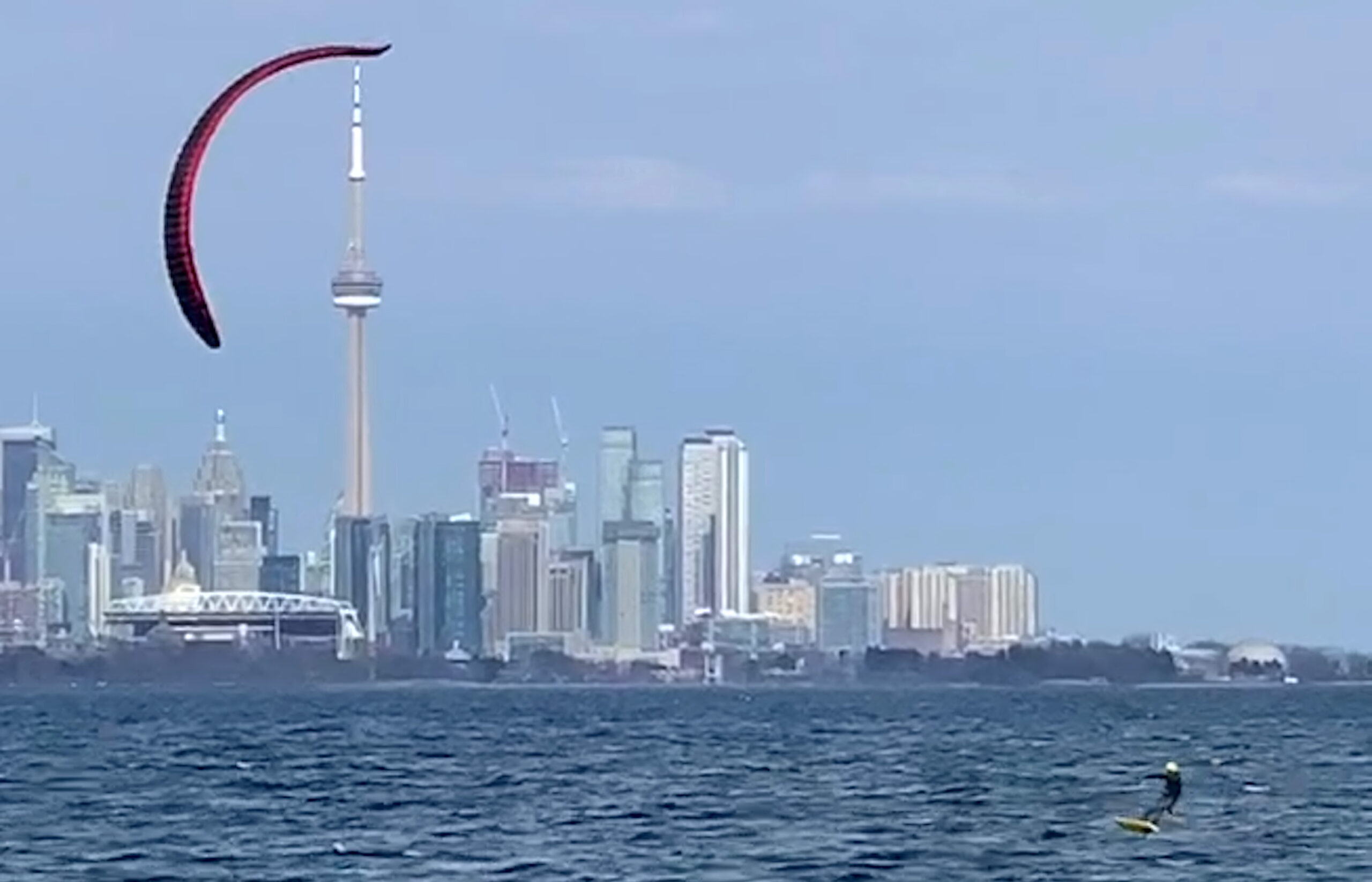
Thermal Wind Experiment
Correct forecasting of thermal winds for Lake Ontario around Toronto is not an easy task. Every kite-spot seems to have its own factors that affect the local weather conditions. It is not uncommon for me to see kiters having fun on the water 4 kilometers away from my launch site, while at the same time, there is absolutely no wind at my location and the leaves in the trees are absolutely still. Nevertheless, every kiter in the community pays close attention to this weather phenomenon because the summers are quite windless and every day that turns into a kite day thanks to thermals is appreciated.
Understanding the principles of thermal flow along the shoreline made me wonder whether I could accidentally kite myself out of the thermal zone. If I kited far enough into the lake, I should find the boundary where the thermal conditions weaken significantly and the wind dies off. Don’t you think? Let’s find out!

I chose a day when the wind blew offshore in the morning and the perfectly kitable conditions in the afternoon were a clear sign of a thermal wind. Shortly before 2p.m., I launched my kite and foiled away. I started in about 12 knots with white caps everywhere around. When I was 5 kilometers from the shore, the conditions seemed unchanged, still lots of power in my 13m Sonic2 kite. The first time I started to feel a bit of difference was somewhere around 7 kilometers from shore. The wind became lighter and the white caps seemed to start disappearing. At about 9 kilometers out into the lake, I started to worry. There were no more white caps around me and I felt only a very light pull on my control bar. I wondered how much of a “real wind” still powered my kite. In my personal wind terminology, Kiting Wind has two components: Real Wind and Apparent Wind. This is very important for foiling in super-light wind conditions. While moving on the foil, the apparent wind component adds to the overall power generated by the kite. But as soon as the kiter stops, falls, or slows down to make a transition, this additional “power source” disappears the same way an airplane’s wing stops generating lift when it is not moving fast enough. When the wind is so light that all this matters, you must maintain your speed and most importantly you must NOT fall! If you do, the game is over. Needless to say that, for a full water-start, you need even more wind. Effectively, in this case you have managed to kite yourself into a hole that you can’t kite yourself out of.
To kite myself into a hole nearly 10 kilometers away from land was not really my intention. I decided to do a short transition in order to assess the wind situation as best as I could. And as the wind still felt quite okay, I continued. Further away from the shore I went.

It could have been my nerves or perhaps I really got to the “birth place” of a thermal wind, but after a while, I felt that there was no safe way for me to continue. There were only tiny ripples on the lake; the surface seemed beautifully smooth. My GPS showed 10.31 kilometers from shore. I barely completed my transition without my kite falling in the water and then I was on the way back. Gaining speed on my foil again gave me a bit more confidence and so I rode “the edge” of the thermal zone for a few hundred meters and then I finally turned back to the shore, hoping to find some more wind along the way.
Toronto seemed really far from my vantage point and I loved my surroundings. My personal “middle of nowhere” was really beautiful, quiet, pristine and peaceful. I felt free. As expected, the wind grew gradually stronger, the white caps slowly reappeared, and I was back in quite ideal kitesurfing conditions in a short while. Amazing! I experimentally proved my theoretical thoughts and I reached the “end/beginning” of a thermal wind by kite! How cool is that?
